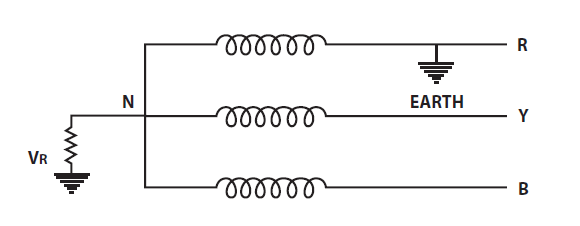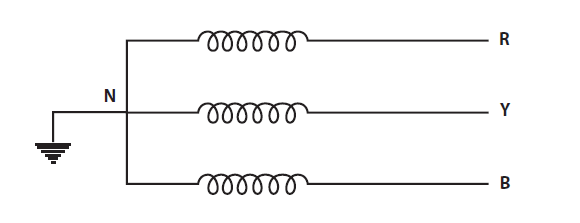Cables for MV Power Distribution - Earthed versus Unearthed Systems
Power cables can basically be classified into earthed and unearthed cables, where earthed and unearthed refer to the application for which the cable is used. Earthed system refers to a three phase system whose star point is grounded directly and the voltage between the healthy phases and the ground will be - 11kV/1.732 or 6.6/1.732. In the case of unearthed cable, ground voltage is equal to phase to phase voltage.
| Earthed Cables |
|
Unearthed Cables |
 |
|
 |
Medium Voltage (MV) voltage power distribution system cables can be both earthed and unearthed. If the system is earthed, then we use earthed rated cable for manufacturing; and if the system is unearthed, we use an unearthed rated cable for manufacturing.
Compared with the earthed cable as per the manufacturer's specifications, the unearthed cable needs higher insulation levels.
The greatest difference arises in the voltage grade (Uo/U), which is:
| Earthed System |
Unearthed System |
| 1.9/3.3 kV, 3.8/6.6 kV, 6.35/11 kV, 12.7/22 kV and 19/33 kV |
3.3/3.3 kV and 11/11 kV |
In an exception to the abover, the cables of 6.35/11kV for an earthed system can also be used in the place of 6.6/6.6 kV for an unearthed system. This is because each core of the cable has the insulation level to withstand 6.6kV due to which between core to core insulation level will be 6.6kV+6.6kV = 11kV.
The Difference in Origin
The first generators and transformers had small capacities in which the fault current was less and the star point was solidly grounded due to which they were called earthed system. Generators that are now available have 500MVA capacity and higher fault levels. So, if there is an earth fault, a heavy current flows into the fault, which leads to the damage of the generators and transformers. In such a scenario, to reduce the fault current, the star point is connected to the earth through a resistance. In case of an earth fault in one phase, the voltage of the faulty phase with respect to the earth appears across the resistance. Due to this, the voltage of the remaining two healthy phases with respect to the earth rises by 1.7 times. If the insulation system is not designed to sustain these increased voltages, they are likely to develop earth faults.
In case of earthed cable, three phase cables are earthed to a ground and each of the phase system is grounded to the earth. While the unearthed system (if system neutral is not grounded) phase to ground voltage can be equal to phase to phase voltage; in such situations the insulation level of the conductor to the armor should be equal to the insulation level of conductor to conductor. In the three phase earthed systems, phase to earth voltage is 1.732 times less than phase to phase voltage. Thus, the voltage stress on the cable to armor is 1.732 times less than the voltage stress between conductor to conductor.
Insulation Strength
Unearthed cable requires more insulation strength than earthed cable. If a fault occurs in the phase to ground voltage is √3 time the normal phase to ground voltage. So, if an earthed rated cable is used in an unearthed system, it may result in an insulation puncture. Hence, it is essential to use unearthed rated cable in such situations, especially in the case of 6.6kV systems where resistance type earthing is used.
Cable Requirements
Carrying forward the above point, 11kV earthed cable can be used in place of 6.6kV unearthed system since the cable manufacturing process is the same. The size of the cable will depend on the current rating and voltage level. So,
- Voltage grade (Uo/U) where Uo is phase to earth voltage and U is phase to phase voltage
- Earthed system has an insulation grade of kV/1.75x kV
- For earthed system (Uo/U): 1.9/3.3 kV, 3.8/6.6 kV, 6.35/11 kV, 12.7/22 kV and 19/33 kV
- Unearthed system has insulation grade kV/kV
- 3 phase 3 wires system generally comes with unearthed grade cable and 3 phase 4 wire systems can be used as earthed grade cables
Preferable Cable for MV Transmission
For MV transmission, earthed cable will be more economical, but unearthed cable offers more insulation. This is because, if an earth fault occurs in the underground system, the voltage between the healthy phases and the ground will be equal to phase to phase voltage - 11kV or 6.6kV and higher insulation level is required. The voltage of the healthy phases rises by nearly 1.7 times resulting in an earth fault since the insulation of these phases is not designed for increases voltage. It is advisable to opt for an unearthed cable so that the core insulation has enough strength.